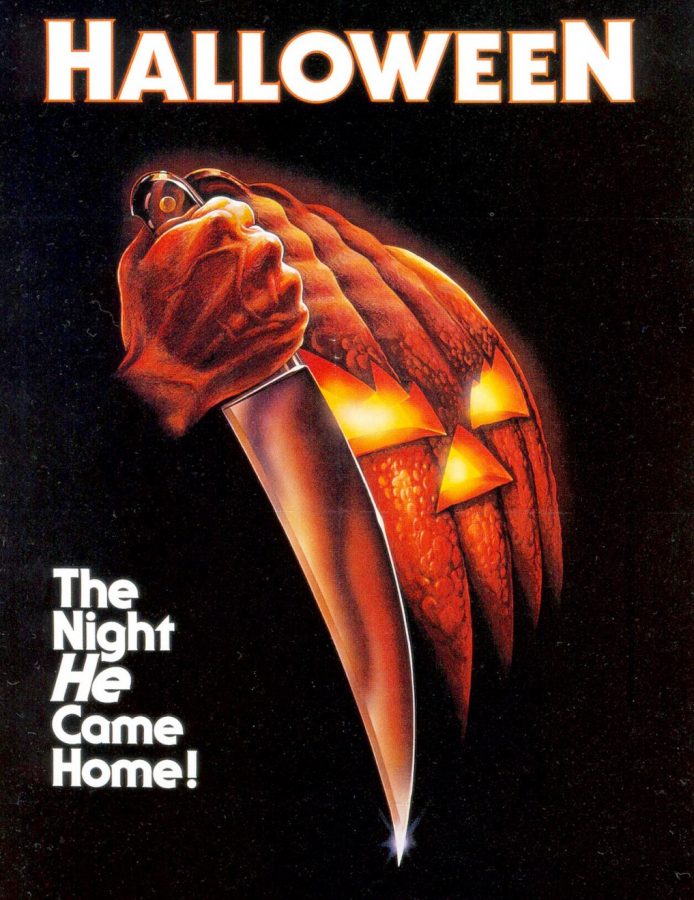
In the seventies, mainstream horror movies were more supernatural than slasher movies.
From “The Exorcist” to “The Omen” to “Carrie”, it too devils and demons to be scary enough for Hollywood to invest serious money into the genre. The “escaped lunatic” with a knife wasn’t enough. Films like that were relegated to the independent, low-budget filmmakers to spend a few hundred thousand dollars and hope to make it back in drive-ins and such.
That’s what John Carpenter did. He directed, co-wrote and scored a movie about an escaped lunatic chasing babysitters and got it distributed city by city, starting in Kansas City, Missouri.
The $320,000 film made close to $50 million dollars and was the most successful independent film for decades.
Halloween.
It single-handed launched major studio involvement in “slasher films,” some already made independently on the cheap, and some with major studio support. Several similar films were released month after month through the early eighties. No holiday was spared. “Friday the 13th”, “Mother’s Day”, “My Bloody Valentine”, “April Fool’s Day”, “New Year’s Evil” and a whole lot more.
But Halloween stood supreme as the champion, and it’s mostly due to Director John Carpenter and Cinematographer Dean Cundey, who sunk precious resources into how the film looked and sounded.
It wasn’t necessarily casting, since many of Carpenter’s first choices turned him down flat. Fortuitously so, for the refusals led to Jamie Lee Curtis and Donald Pleasance. It might have been a different experience with Anne Lockhart and Peter Cushing, Carpenter’s first choices.
And it wasn’t the script, although some pretty witty dialogue was added by Debra Hill. No one, including Carpenter, thought they were doing Shakespeare here.
But Carpenter and Cundey made their film look fantastic. This is a case where the director made all the right choices. John Carpenter spent his money on cameras, film and processing. He shot with Panaglide (Steadicam). He used the best quality film and processing. Bottom line – Halloween looked great.
The first shot, a composed single take hearkening back to the opening of Touch of Evil, is a point of view shot that would be copied by dozens of films in the following decade.
John Carpenter took a low budget idea for babysitter murders and crafted a classic.
He composed and performed the score and made his film scarier. Irwin Yablans, who thought of setting the film on Halloween night, said he saw people not covering their eyes but their ears in theaters. The sounds were too scary.
Today, the film works. It does everything a horror film does. It’s creepy, suspenseful and once the rollercoaster ride starts it doesn’t stop.
Particularly, I love the colors he uses. The days are orange and the nights are blue. If you don’t have the cinematographer Dean Cundey approved version, you are missing a main ingredient in the film experience.
This is an example of how filmmaking can make a good film great. Not much is told about Michael Myers or why he kills. We meet his main victims as he stalks them. As day turns to night, we feel claustrophobic as wide shots on streets become tight shots in laundry rooms, cars and closets.
I was amazed when I saw in in theaters. It still works today at home, but it helps if the lights are dimmed. It’s well worth another take.
The Highlight Reel
Best shot of the movie is when Laurie discovers the bodies of her friends and backs into a dark corner. As your eyes adjust to the darkness, the mask of the killer slowly appears over her shoulder. Classic!
 7.7
7.7

Photos
See all photos >>






